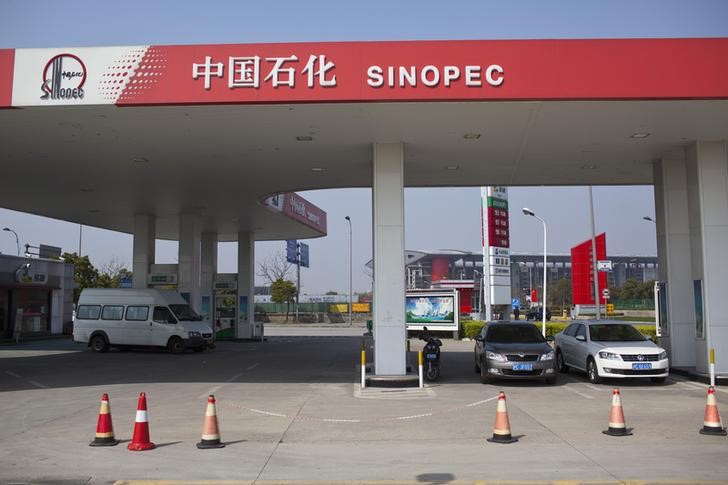By Jonathan Leff
(Reuters) - China's state-run oil refiner Sinopec Corp (HK:0386) has purchased its first ever batch of U.S. crude oil for export, a source told Reuters on Thursday, a landmark transaction after the ending of a four-decade ban on domestic exports.
The cargo, due to be loaded from a Gulf Coast port in March, may mark the start of a sustained flow of U.S. oil to China, the world's second-largest buyer, which is eager to diversify its energy sources. Unipec, its trading arm, also has the advantage of leased oil storage tanks in the Caribbean, which could allow it to blend U.S. shale with cheap, heavy Latin American crudes for a bespoke mix ideally suited to its plants back home.
While the first unfettered exports of domestic crude have already set sail to Europe, those cargoes are generally seen as one-off shipments by companies eager to make a point after fighting for two years to end the ban. Based on current U.S. and world prices, the cargoes do not appear profitable, traders said.
With China, the calculations are less straightforward. As the world's second-biggest oil refiner, Sinopec buys more crude oil than almost any other company, and has worked to improve its supply security by seeking out diverse sources.
"U.S. crude oil exports are positive news for the global market, and make it possible for Asia-Pacific refiners to diversify their supply if the crude is economically competitive," a company source said. "Our upcoming storage capacity in the Caribbean is well-suited to this development."
The source declined to comment on any further details of the transaction, including the variety of crude, price or supplier.
A Sinopec Corp representative said the company does not comment on specific deals.
Due to shipping limitations along the Gulf Coast, it is likely to be around 600,000 barrels, a relatively tiny sum equivalent to about two hours' worth of China's overall imports. That would make it worth about $20 million, too small to put a serious dent in a $30 billion a month trade deficit with China.
But it carries symbolic significance as the United States enters a new era of free oil trade after Congress moved with surprising speed and success last month to scrap the longstanding ban on most overseas shipments.
A handful of companies including producer ConocoPhilips (N:COP) and Swiss trader Vitol SA [VITOLV.UL] raced to ship the first cargoes, which sailed in recent weeks from Gulf Coast ports. But with benchmark U.S. crude oil futures trading at a premium of over $1 a barrel versus global market Brent, traders said most buyers are better off shopping overseas than shipping U.S. crude abroad.
BUY AND BLEND?
This shipment is set to flow directly to China, said the source, but future cargoes may go instead to St. Croix, in the U.S. Virgin Islands. A shuttered refinery in St. Croix was rescued from bankruptcy in December and is being reborn as a large oil storage hub.
At the St. Croix site, Sinopec agreed to lease 10 million barrels worth of crude tank capacity for 10 years as part of a revival led by U.S. private equity firm ArcLight Capital and Connecticut-based commodity trader Freepoint. It is not expected to be ready for use until later in the year, however.
The St. Croix base would give Sinopec the ability to blend close to the source and save on shipping costs back to China.
While a landmark shipment, it will not be the first time China has bought crude from the United States, data show.
Two unusually small cargoes of around 200,000 barrel each were shipped to China from the San Francisco Bay area in April and May last year, according to U.S. and Chinese trade data. The content of those cargoes could not be verified, and it is possible they were trans-shipments of foreign crude.
Apart from such sporadic shipments, China has imported almost no U.S. crude outside of a brief space of cargoes from Alaska in the late 1990s, when Alaskan North Slope crude was exempted from the ban at a time of surging output.
